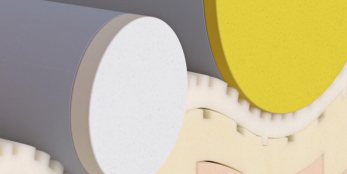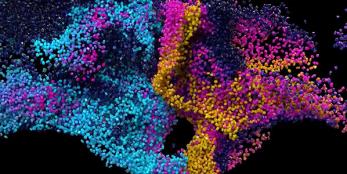Before working with this product, you must read and become familiar with the available information on its risks, proper use, and handling. Information is available in several forms, e.g., in particular in the currently valid safety data sheets and product labels. For further information contact your Covestro representative.
Product description
Form supplied
Desmodur® 44 C fused can be supplied as a solidified block in large drums (net weight 225 kg)
Sampling
Moisture access should be prevented when taking product samples.
Specification
| Property | Test Condition | Value | Unit | Standard |
|---|---|---|---|---|
| 2,4'-isomer content | ≤ 1,8 | % by wt. | MDI-01-06 | |
| Hydrolysable chlorine | ≤ 50 | ppm | MDI-01-04 | |
| MDI-Dimer* | ≤ 0,10 | % by wt. | MDI-01-08 |
*applies only to the liquid form at the time of delivery
Typical Values
| Property | Test Condition | Value | Unit | Standard |
|---|---|---|---|---|
| Purity ( mol. wt. 250 ) | ≥ 99,5 | % by wt. | MDI-01-01 | |
| NCO-content (theoretical) | 33,6 | % by wt. | ||
| Freezing point | ≥ 38,4 | °C | ||
| Phenylisocyanate-content | ≤ 10 | ppm | MDI-01-09 | |
| Viscosity at 40 °C | 4,1 | mPa*s | ||
| Density at 40 °C | 1,19 | g/cm3 | DIN 51757 | |
| Specific heat (cp) | approx. 1,39 | kJ/kg*K | ||
| Heat of fusion | approx. 102 | J/g |
* These values provide general information and are not part of the product specification
Storage
Like all isocyanates, Desmodur® 44 C Fused is sensitive to moisture and reacts with water to form insoluble urea derivatives and carbon dioxide. The generation of carbon dioxide in sealed containers can lead to a dangerous build-up of pressure. Contact with air, especially if accompanied by simultaneous exposure to light, accelerates yellowing. It is therefore advisable to store liquid Desmodur® 44 C Fused under dry nitrogen. Yellowing generally has no effect on the product's processing behaviour, however.Desmodur® 44 C Fused is sensitive to heat and likely to dimeriation. The solid product dimerises more rapidly at room temperature than the liquid product stored at 43 °C. Crystallized Desmodur® 44 C Fused should therefore be stored at temperatures below +5 °C and melted rapidly but gently before use. Although the rate of dimerisation decreases as the temperature drops, storage stability is still limited even at temperatures below + 5 °C.Handling regulations, technical data relating to safety, advice on the transportation of liquids and on customer tank farms and suggestions for melting equipment are available from us on request.
Storage time

Covestro represents that, for a period of three months following the day of shipment as stated in the respective transport documents, the product will meet the specifications or values set forth in section "specifications or characteristic data" above, what ever is applicable,provided that the product is stored in full compliance with the storage conditions set forth in and referenced under section "storage" above and is otherwise handled appropriately.The lapse of the three months period does not necessarily mean that the product no longer meets specifications or the set values.However, prior to using said product, Covestro recommends to test such a product weather it still meets the specifications or the set values. Covestro does not make any representation regarding the product after the lapse of the three months period and Covestro shall not be responsibleor liable in any way for the product failing to meet specifications or the set values after the lapse of the three months period.
Processing
It must be ensured that the containers - including those that are empty - are kept sealed. Above all, contact with water must be prevented as it reacts with Desmodur® 44 C Fused to form polyureas and carbon dioxide. During storage, sample withdrawal, transfer and processing of Desmodur® 44 C Fused, the ingress of water in any form (damp containers, aqueous solvents, moist air) must be prevented as otherwise the formation of carbon dioxide may cause a dangerous increase in pressure in the tanks and containers. Furthermore, the formation of polyureas in Desmodur® 44 C Fused may cause turbidity and possibly solid deposits which may then block filters, pumps and pipelines.
Health and Safety Information
Disclaimer
General
The manner in which you use our products, technical assistance and information (whether verbal, written or by way of production evaluations), including any suggested formulations and recommendations, are beyond our control. Therefore, it is imperative that you test our products to determine suitability for your processing and intended uses. Your analysis must at least include testing to determine suitability from a technical, health, safety, and environmental and regulatory standpoint. Such testing has not necessarily been done by Covestro, and Covestro has not obtained any approvals or licenses for a particular use or application of the product.
Unless we otherwise agree in writing, all products are sold strictly pursuant to the terms of our standard conditions of sale which are available upon request.
All information and including technical assistance is given without warranty or guarantee and is subject to change without notice. It is expressly understood and agreed by you that you assume and hereby expressly release indemnify us and hold us harmless from all liability, in tort, contract or otherwise, incurred in connection with the use of our products, technical assistance, and information. Any statement or recommendation not contained herein is unauthorized and shall not bind us. Nothing herein shall be construed as a recommendation to use any product in conflict with any claim of any patent relative to any material or its use. No license is implied or in fact granted under the claims of any patent.
Non Medical and non Food Contact
This product is not designated for the manufacture of a medical device or of intermediate products for medical devices (1). This product is also not designated for other specifically regulated applications (e.g. including cosmetics, plant protection, fertilisers, plant strengtheners, food processing, food contact and others). If the intended use of the product is for the manufacture of a medical device or of intermediate products for medical devices or for other specifically regulated applications Covestro must be contacted in advance to provide its agreement to sell such product for such purpose. Nonetheless, any determination as to whether a product is appropriate for use in a medical device or intermediate products for medical devices, for Food Contact products or cosmetic applications must be made solely by the purchaser of the product without relying upon any representations by Covestro.
1) Please see the Guidance on Use of Covestro Products in a Medical Application document.
Sample
Any samples provided by Covestro are for testing purposes only and not for commercial use.
Typical value
These values are typical values only. Unless explicitly agreed in written form, they do not constitute a binding material specification or warranted values
Contact Information
Please use our contact form or contact us directly by sending an e-mail to technical-datasheets@cx.covestro.com .








